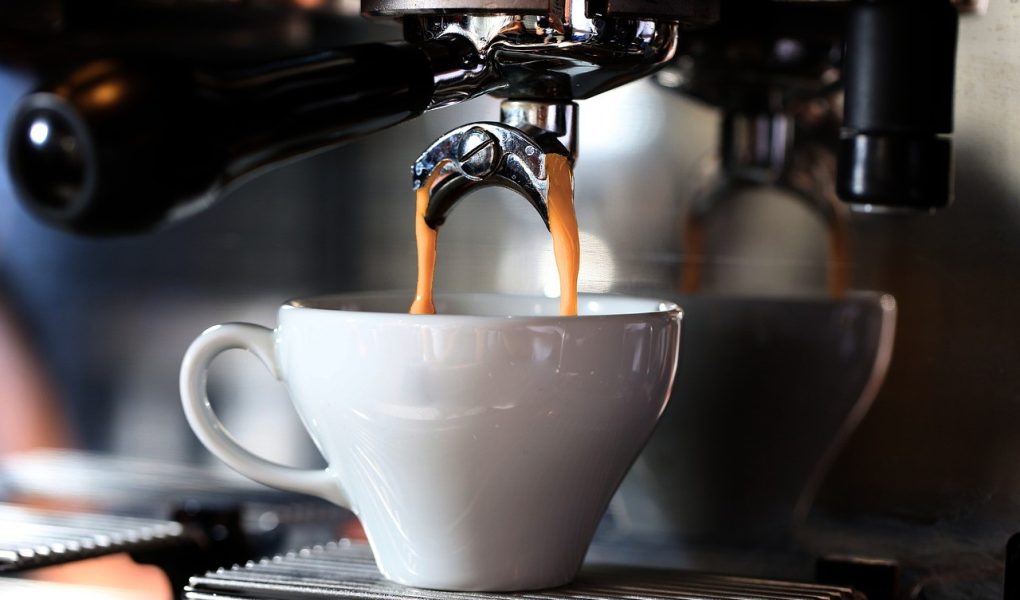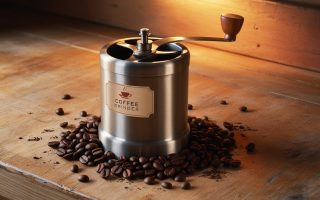For coffee lovers, the search for the perfect cup often starts at home with the right coffee maker. But when faced with choosing between a cheap coffee maker and a pricier model, the decision can feel tricky. Sure, the budget-friendly machine saves money upfront, but will it end up costing more in the long run? On the other hand, an expensive coffee maker might promise better features and durability, but does it really pay off over time?
This question of short-term savings versus long-term value is at the heart of many buying decisions, and coffee makers are no exception. While a cheap coffee maker might get you through a few cups, there’s more to consider than just the initial price tag. Quality, durability, maintenance costs, and even energy efficiency can make a big difference over the years.
In this article, we’ll explore the pros and cons of cheap and expensive coffee makers, looking beyond the price to help you choose the option that saves you the most in the long run—and delivers the coffee experience you’ll love every morning.
Initial Costs
When shopping for a coffee maker, the initial price is often the first thing that grabs your attention. Cheap coffee makers can be found for as little as $20, making them an easy choice if you’re on a budget or just dipping your toes into home brewing. These budget models tend to cover the basics: they brew coffee, sometimes offer a basic timer or automatic shutoff, and get the job done without a lot of extras.
On the other hand, higher-end coffee makers can cost hundreds, even reaching $500 or more. But with the price tag comes a variety of features that can transform your coffee experience. Expensive coffee makers often offer precise temperature control, advanced brewing options, built-in grinders, and other settings that let you customize each cup to your exact taste. Many also boast higher-quality materials, like stainless steel components and reinforced glass, which add durability and a bit of style to your countertop.
While the cheaper option might seem like an obvious win for your wallet, it’s worth considering what you’re giving up. High-end machines are built to perform at a consistently high level, which can translate to better flavor and fewer replacements down the road. In contrast, cheaper coffee makers, while practical, may fall short on both flavor and lifespan, leading to quicker replacements that can add up over time.
Ultimately, the initial cost difference between cheap and expensive coffee makers reflects more than just added features. It’s an investment in quality, performance, and longevity. But whether those extras are worth the price depends on what you value most in your daily cup of coffee and how long you’re hoping the machine will last.
Performance and Brew Quality
When it comes to coffee, taste is everything. This is where the difference between cheap and expensive coffee makers really starts to show. While both types will brew coffee, the quality of that coffee can vary widely depending on the machine.
Cheap coffee makers often have basic heating elements, which means the water might not reach the ideal brewing temperature. As a result, you might end up with coffee that tastes flat, weak, or even a little bitter. These machines usually lack advanced features like pre-infusion (wetting the grounds before brewing to enhance flavor) or consistent water flow, both of which help extract richer flavors from the coffee grounds. For casual drinkers, these differences may not stand out, but for those who love a nuanced, well-rounded cup, the performance gap can be noticeable.
Expensive coffee makers, on the other hand, are designed with brew quality in mind. Many premium models feature precise temperature control, which keeps water consistently between 195 and 205 degrees Fahrenheit—ideal for optimal extraction. Some high-end machines even have programmable settings for different brew strengths or styles, allowing you to adjust to your taste preferences. With features like pre-infusion, evenly distributed water flow, and a controlled brewing time, these machines bring out more depth and complexity in each cup.
There’s also the matter of consistency. With a higher-end coffee maker, you’re more likely to get the same quality of coffee every time you brew. The design and technology of these machines minimize variables, making it easier to enjoy a consistent, flavorful cup without the guesswork. Cheap machines, by contrast, can be a bit hit-or-miss. The flavor of your coffee may vary from day to day, depending on factors like the grind size, water temperature, and even how long the machine has been running.
The difference in performance and brew quality comes down to how much you value the flavor and consistency of your coffee. If a rich, full-bodied cup that highlights all the subtle flavors of your coffee beans is important, an investment in a high-quality machine may be worth it. But a cheaper model can still satisfy your caffeine needs if you’re simply looking for a quick, basic brew.
Maintenance and Replacement Costs
When considering a coffee maker, it’s easy to focus on the upfront cost, but what about the cost of keeping it running smoothly? Maintenance and replacement expenses can add up over time, and depending on whether you’re using a budget model or a high-end machine, these costs can look quite different.
Cheap coffee makers are often designed with simplicity in mind, but this can sometimes mean sacrificing durability. These machines may have plastic parts, lower-quality heating elements, and minimal insulation. As a result, they tend to wear out faster, especially with daily use. For a budget coffee maker, replacement might be required every year or two, and each new machine brings an additional cost. Plus, while many inexpensive models are easy to clean, some have small, less accessible parts that can make thorough maintenance a bit challenging.
Expensive coffee makers, on the other hand, are often built to last. They’re typically made with sturdier materials like stainless steel and come with quality components designed to handle regular use over the long term. While the initial price is higher, these machines usually require fewer replacements. With proper care, a high-end coffee maker can serve you for many years, potentially saving money in the long run by reducing the need to buy a new machine frequently.
Maintenance itself also varies. Many premium machines come with self-cleaning features, descaling alerts, or removable parts that make routine cleaning easier. Some high-end brands even offer customer support and extended warranties, covering parts and repairs if issues arise. While regular maintenance supplies like descaling solution or replacement filters add a small cost, these extras help keep the machine in top shape, ensuring that it lasts longer.
For a cheaper coffee maker, the risk of needing repairs might be lower simply because replacement often seems more practical than repair. But with a higher-end machine, taking care of maintenance can actually protect your investment, helping you avoid the need for costly repairs down the line.
Ultimately, the choice between a cheap and an expensive coffee maker isn’t just about the initial cost; it’s about the ongoing investment. If you’re looking for something low-cost with minimal upkeep, a budget model can get you through for a while. But if you’re interested in a reliable machine that can go the distance, a higher-end coffee maker might offer greater value in the long term.
Energy Efficiency and Operational Costs
Beyond the upfront price tag, one factor that often goes unnoticed in the coffee maker debate is energy efficiency. How much electricity your coffee maker uses each day may seem minor, but over time, these small costs add up. Depending on the machine, the difference in operational costs can be significant, especially if you’re brewing multiple times a day.
Cheap coffee makers tend to have basic heating systems, which can mean they aren’t as energy efficient. These models may lack features like programmable timers or automatic shutoff, which means they could be running longer than necessary, using more power. The lack of insulation in many budget machines also means they can lose heat quickly, requiring extra energy to maintain the right temperature for brewing. While the extra energy cost may not be massive month to month, it does accumulate over time, potentially making a cheap coffee maker less economical than it appears at first glance.
Expensive coffee makers often come with built-in energy-saving features. Many premium models offer programmable settings, allowing you to set a brew time so the machine only heats up when needed. Some also have power-saving modes, meaning they automatically turn off when not in use, cutting down on standby energy consumption. Additionally, high-end machines tend to have better insulation, which keeps the water at the optimal temperature with less energy. Over time, these features can help you save on electricity, particularly if you’re an everyday coffee drinker.
Operational costs don’t stop with electricity. Expensive coffee makers may use quality filters or other components that need occasional replacement, while cheaper models might rely on simpler, disposable filters. Though the cost of these extras is small, it’s worth factoring in, as high-end machines are typically designed to balance these operational expenses with efficiency.
In the long run, choosing a coffee maker with energy-efficient features can make a difference, especially if you’re a daily user. A budget coffee maker may seem like a bargain upfront, but the savings of a more efficient, premium model can add up over time, helping you enjoy your coffee with less impact on both the environment and your electricity bill.
Additional Features and Convenience
When it comes to coffee makers, the bells and whistles can make all the difference, especially if you’re looking to streamline your morning routine. While both cheap and expensive models brew coffee, higher-end machines often come with extra features that add convenience and enhance the overall experience.
Cheap coffee makers tend to stick to the basics. Most budget models have a simple on/off switch, a standard brewing function, and maybe a warming plate to keep your coffee hot for a while. These machines often lack programmable options, so if you want your coffee ready at a specific time, you’ll have to brew it manually. For those who are simply after a quick, no-fuss cup, these basic features might be enough.
Expensive coffee makers, however, usually come packed with convenience-oriented extras that can save time and add flexibility. Many high-end models include programmable timers, allowing you to set your coffee maker the night before and wake up to a freshly brewed pot. Others offer multiple brew settings, letting you choose your preferred strength or even switch between single cups and full pots. Some premium machines even come with built-in grinders, so you can enjoy freshly ground beans without needing separate equipment.
Temperature control is another feature often reserved for pricier coffee makers. With precise control over the brewing temperature, you can enjoy a cup tailored to bring out the best flavors in your coffee beans. This feature is especially useful for those who are particular about taste, as temperature affects extraction and, ultimately, flavor.
High-end machines also frequently offer features designed for easy cleanup, such as removable water reservoirs, self-cleaning modes, and dishwasher-safe components. These may seem like small details, but they make a big difference if you’re using the machine every day and want to keep maintenance to a minimum.
While these extras can add to the cost, they can also elevate your coffee routine, giving you a smoother, more personalized experience. If your coffee ritual is an important part of your day, or if you simply enjoy the convenience of a machine that “just knows” what you need, investing in a coffee maker with additional features might be worth it.
Environmental Impact and Sustainability
Beyond performance and cost, choosing a coffee maker can also be an opportunity to think about environmental impact and sustainability. The choice between a cheap coffee maker and a high-end model goes beyond just personal convenience—it’s about how each machine affects the planet, both in terms of waste and resource use.
Cheap coffee makers are often designed for affordability, which can mean more plastic parts and a shorter lifespan. Many budget models are built to be disposable, with parts that can wear out quickly and are difficult or impossible to repair. When a cheap coffee maker breaks, it often ends up in the landfill. Over time, these repeated replacements contribute to waste, creating a larger environmental footprint than you might expect from a small appliance.
In contrast, expensive coffee makers are usually built with durability in mind. Higher-end models often feature metal components and more robust designs that can withstand years of daily use. Many premium coffee makers are designed to be repairable, with parts that can be replaced rather than the whole machine being discarded. This longevity means fewer coffee makers end up in the trash, reducing waste and lessening environmental impact.
Sustainability also shows up in the materials used. Expensive coffee makers are more likely to include stainless steel, glass, and other recyclable or reusable materials, while cheaper models may rely heavily on plastics that are harder to recycle. Some premium brands even offer eco-friendly certifications, reflecting a commitment to responsible sourcing and manufacturing practices.
Another consideration is energy efficiency. While we covered operational costs earlier, it’s worth noting that energy-efficient machines don’t just save on electricity bills—they also reduce overall energy demand, which is better for the environment. Many high-end models have energy-saving modes and automatic shutoff features that help minimize unnecessary power usage.
If sustainability is a priority for you, an investment in a quality coffee maker might align better with your values. While it may cost more upfront, a durable, repairable, and efficient machine can help minimize waste, reduce energy use, and ultimately have a smaller environmental impact.
Conclusion: Balancing Upfront Cost with Long-Term Value
Choosing between a cheap and expensive coffee maker is about more than just the initial price tag—it’s a decision that reflects what you value most in your daily coffee ritual. While a budget coffee maker might seem like the obvious choice if you’re watching costs, a high-end machine can be a smart investment in terms of durability, brew quality, and even sustainability.
A cheap coffee maker might serve you well for a quick cup without the extras, but it often comes with trade-offs in performance, replacement frequency, and environmental impact. On the other hand, an expensive coffee maker may cost more upfront, but the consistent quality, convenience features, and longevity it offers can make it a worthwhile addition to your kitchen, especially if you’re passionate about coffee.
Ultimately, the best choice comes down to your priorities. If you’re simply looking for a straightforward brew, a budget model might be all you need. But if you value rich flavor, reliability, and a machine that can stand the test of time, investing in a quality coffee maker can be a satisfying decision you’ll appreciate every morning. By balancing initial cost with long-term value, you can enjoy a coffee experience that fits your needs and brings joy to your routine.



